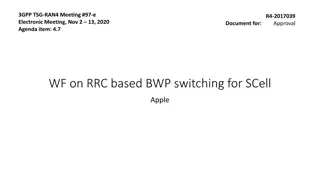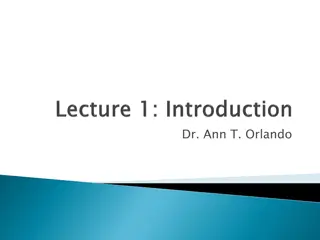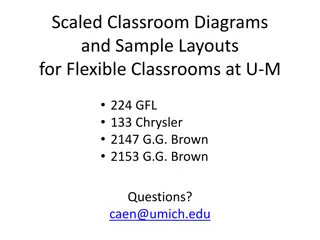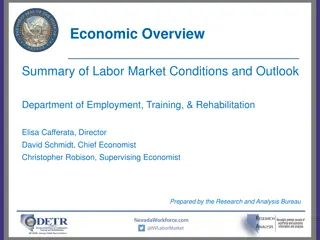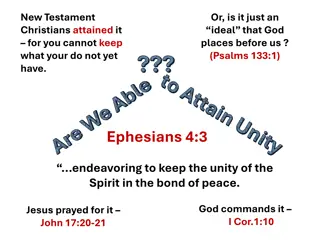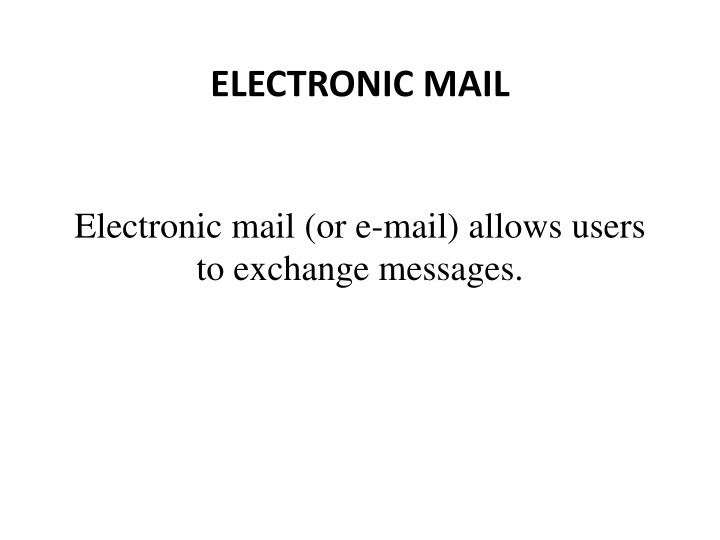
Electronic Mail Systems and User Agents
Dive into the world of electronic mail systems, learning about mail servers, mailboxes, message queues, and the role of different agents like User Agents (UA). Explore the types of User Agents and how they facilitate the sending and receiving of messages in a seamless manner.
Download Presentation

Please find below an Image/Link to download the presentation.
The content on the website is provided AS IS for your information and personal use only. It may not be sold, licensed, or shared on other websites without obtaining consent from the author. If you encounter any issues during the download, it is possible that the publisher has removed the file from their server.
You are allowed to download the files provided on this website for personal or commercial use, subject to the condition that they are used lawfully. All files are the property of their respective owners.
The content on the website is provided AS IS for your information and personal use only. It may not be sold, licensed, or shared on other websites without obtaining consent from the author.
E N D
Presentation Transcript
ELECTRONIC MAIL Electronic mail (or e-mail) allows users to exchange messages.
The sender and the receiver of the e-mail, are connected via a LAN or a WAN to two mail servers. The administrator has created one mailbox for each user where the received messages are stored. A mailbox is part of a server . Only the owner of the mailbox has access to it. The administrator has also created a queue to store messages waiting to be sent.
Three different agents User Agent (UA) Message Transfer Agent (MTA) Message Access Agent (MAA).
User Agent (UA) The first component of an electronic mail system is the user agent (UA). It provides service to the user to make the process of sending and receiving a message easier. A user agent is a software package (program) that composes, reads, replies to, and forwards messages. It also handles local mailboxes on the user computers.
Types of User Agents command-driven . (user agents belong to the early days of electronic mail.) GUI-based. (Modern user agents are GUI- based.)
command-driven . A command-driven user agent normally accepts a one character command from the keyboard to perform its task. For example, a user can type the character r, at the command prompt, to reply to the sender of the message, or type the character R to reply to the sender and all recipients. Some examples of command driven user agents are mail, pine, and elm.
GUI-based They contain graphical user interface (GUI) components. allow the user to interact with the software by using both the keyboard and the mouse. They have graphical components such as icons, menu bars, and windows that make the services easy to access. Some examples of GUI-based user agents are Eudora and Outlook.
Sending Mail To send mail, the user, through the UA, creates mail that looks very similar to postal mail. It has an envelope and a message . The envelope usually contains the sender address, the receiver address, and other information. The message contains the header and the body. The header of the message defines the sender, the receiver, the subject of the message, and some other information. The body of the message contains the actual information to be read by the recipient
Receiving Mail If a user has mail, the UA informs the user with a notice. If the user is ready to read the mail, a list is displayed in which each line contains a summary. The summary usually includes the sender mail address, the subject, and the time the mail was sent or received.
Addresses To deliver mail, a mail handling system must use an addressing system with unique addresses. In the Internet, the address consists of two parts: a local part and a domain name, separated by an @ sign The local part defines the name of a special file, called the user mailbox, where all the mail received for a user is stored for retrieval by the message access agent. An organization usually selects one or more hosts to receive and send e- mail; they are sometimes called mail servers or exchangers. The domain name assigned to each mail exchanger either comes from the DNS database or is a logical name (for example, the name of the organization).
Mailing List or Group List Electronic mail allows one name, an alias, to represent several different e-mail addresses; this is called a mailing list.
The formal protocol that defines the MTA client and server in the Internet is called Simple Mail Transfer Protocol (SMTP). SMTP is used two times, between the sender and the sender s mail server and between the two mail servers.
Commands and Responses SMTP uses commands and responses to transfer messages between an MTA client and an MTA server. The command is from an MTA client to an MTA server; the response is from an MTA server to the MTA client. Commands : Commands are sent from the client to the server. The format of a command is shown below: (few commands only for example)
Responses Responses are sent from the server to the client. A response is a three digit code that may be followed by additional textual information. (few commands only for example)
Mail Transfer Phases Three phases connection establishment message transfer connection termination
Connection Establishment This phase involves the following three steps The server sends code 220 (service ready) to tell the client that it is ready to receive mail. If the server is not ready, it sends code 421 (service not available). The client sends the HELO message to identify itself, using its domain name address. This step is necessary to inform the server of the domain name of the client. The server responds with code 250 (request command completed) or some other code depending on the situation.
Message Transfer After connection has been established between the SMTP client and server, a single message between a sender and one or more recipients can be exchanged. This phase involves eight steps. 1. The client sends the MAIL FROM message to introduce the sender of the message. 2. The server responds with code 250 or some other appropriate code. 3. The client sends the RCPT TO (recipient) message, which includes the mail address of the recipient. 4. The server responds with code 250 or some other appropriate code. 5. The client sends the DATA message to initialize the message transfer. 6. The server responds with code 354 (start mail input) or some other appropriate message. 7. The client sends the contents of the message in consecutive lines. Each line is terminated by a two-character end-of-line token (carriage return and line feed). The message is terminated by a line containing just one period. 8. The server responds with code 250 (OK) or some other appropriate code.
Connection Termination After the message is transferred successfully, the client terminates the connection. This phase involves two steps. 1. The client sends the QUIT command. 2. The server responds with code 221 or some other appropriate code.
Message Access Agent: POP and IMAP Post Office Protocol, version 3 (POP3) is simple but limited in functionality. The client POP3 software is installed on the recipient computer; the server POP3 software is installed on the mail server POP3 has two modes: the delete mode and the keep mode. Delete mode : The mail is deleted from the mailbox after each retrieval. Keep mode : The mail remains in the mailbox after retrieval. The delete mode is normally used when the user is working at her permanent computer and can save and organize the received mail after reading or replying. The keep mode is normally used when the user accesses her mail away from her primary computer (for example, from a laptop). The mail is read but kept in the system for later retrieval and organizing.
Internet Mail Access Protocol, version 4 (IMAP4) Another mail access protocol. similar to POP3, but it has more features. IMAP4 is more powerful and more complex. IMAP4 provides the following extra functions: A user can check the e-mail header prior to downloading. A user can search the contents of the e-mail for a specific string of characters prior to downloading. A user can partially download e-mail. This is especially useful if bandwidth is limited and the e-mail contains multimedia with high bandwidth requirements. A user can create, delete, or rename mailboxes on the mail server. A user can create a hierarchy of mailboxes in a folder for e-mail storage
MIME : (Multipurpose Internet Mail Extensions) It is an extension to the internet email protocol that allows it s users to exchange different kinds of data files over the internet such as images, audio and video. The MIME is required if text in character sets other than ASCII. It is a supplementary protocol that allows non-ASCII data to be sent through e-mail. We can think of MIME as a set of software functions that transforms non-ASCII data to ASCII data and vice versa, as shown in Figure 26.18.
NVT (Network Virtual Terminal) Communication is established using the TCP/IP protocols and communication is based on a set of facilities known as a Network Virtual Terminal (NVT)
Web-Based Mail Webmail is an email service that can be accessed using a standard web browser. Three common sites are Hotmail, Yahoo, and Google mail.
Case I the sender, uses a traditional mail server; Mail transfer from Alice s browser to her mail server is done through SMTP Case II use web servers, Alice sends the message to the web server using HTTP transactions
E-Mail Security Email Security is the term for any procedure that protects email content and accounts against unauthorized access. Email service providers have email security measures in place to secure client accounts and information from hackers. The Most common way messages are encrypted is through Pretty Good Privacy (PGP) data encryption.
Secure/Multipurpose Internet Mail Extensions (S/MIME) It is a technology that allows you to encrypt your emails. It is based on asymmetric cryptography ( or public key cryptography) to protect your emails from unwanted access The public key is used to encrypt and the private key is used to decrypt.


